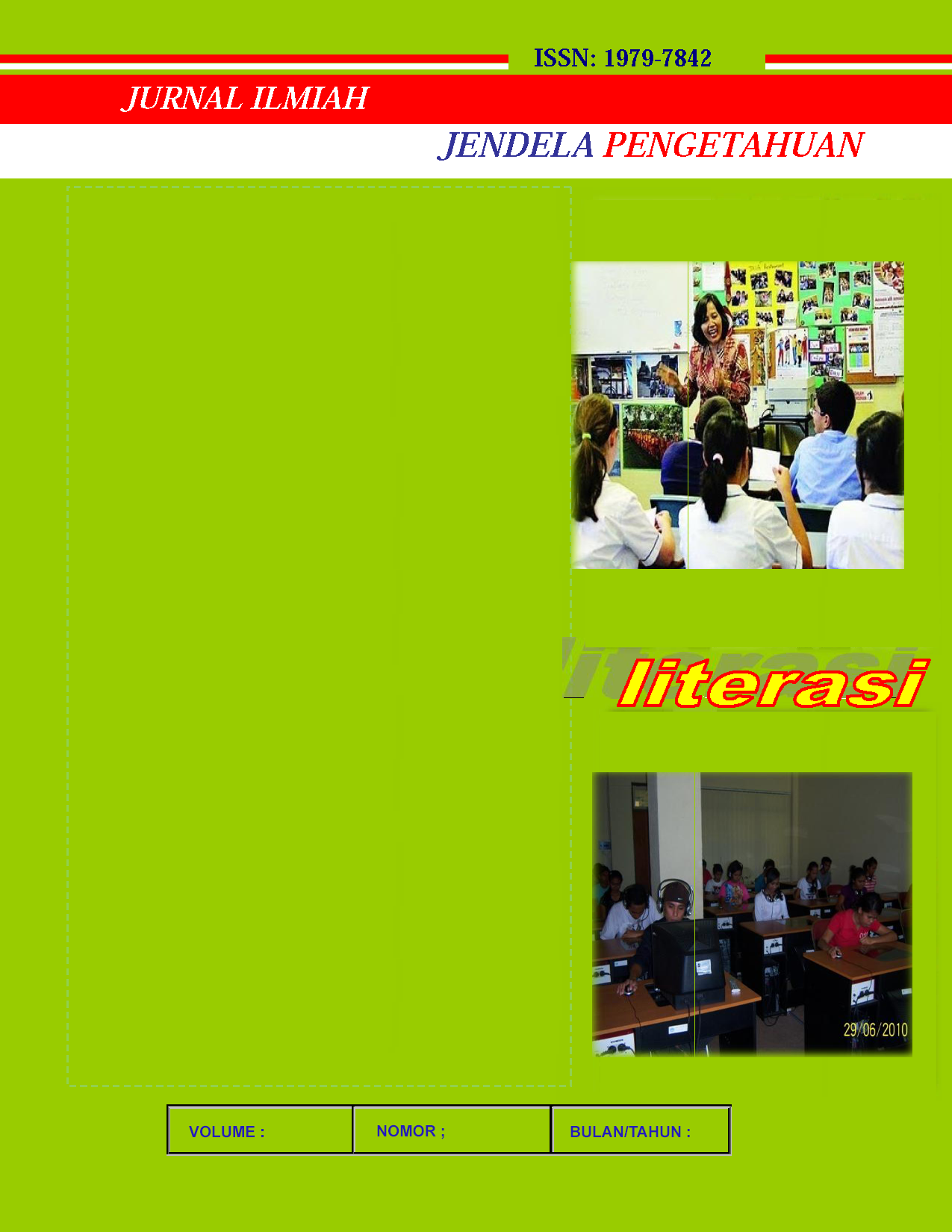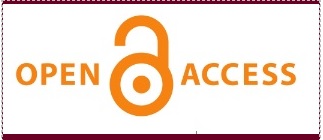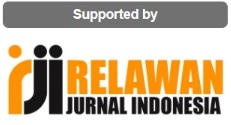The Dynamics of Land Use Change in Metropolitan Areas: The Impact of Urbanization and Sustainable Management Strategies
Dinamika Perubahan Penggunaan Lahan di Wilayah Metropolitan: Dampak Urbanisasi dan Strategi Pengelolaan Berkelanjutan
Abstract
Land use change is a global phenomenon with significant impacts on the environment, society, and economy, especially in metropolitan areas experiencing rapid urbanization. This study aims to analyze the dynamics of land use change, the driving factors, and the resulting ecological and socio-economic impacts. The method used in this research is a literature review with a qualitative approach. Data were collected from various secondary literature sources, including books, journal articles, research reports, and dissertations relevant to the research topic. The findings indicate that urbanization is the primary driver of land use change, leading to the conversion of green spaces such as forests and agricultural land into urban areas. The impacts of these changes include air quality degradation, increased flood risk, soil degradation, and loss of biodiversity. Case studies in cities such as Jakarta, Bangkok, and Manila illustrate how rapid urbanization transforms urban landscapes and creates complex environmental challenges. This research emphasizes the importance of sustainable land management through the application of landscape-based models that integrate spatial and temporal data to predict future land use changes. Evidence-based policy recommendations are provided to support more sustainable and environmentally friendly development. The results of this study are expected to contribute to the development of theory and practice in land use change studies and provide a framework that can be applied in various geographical and socio-economic contexts.
Downloads
References
Arora, A., Pandey, M., Mishra, V. N., Kumar, R., Rai, P. K., Costache, R., Punia, M., & Di, L. (2021). Comparative evaluation of geospatial scenario-based land change simulation models using landscape metrics. Ecological Indicators, 128, 107810. https://doi.org/10.1016/j.ecolind.2021.107810
Bandangan, B., Subekti, H., & Wibowo, A. (2023). Mitigasi Dampak Urban Heat Island di Jakarta melalui Pengembangan Ruang Terbuka Hijau. Jurnal Pengembangan Kota, 12(2), 145-160. https://doi.org/10.14710/jpk.12.2.145-160
Barchia, M., Sari, N. K., & Setiawan, B. (2023). Land Change in Peaty Rice Fields: Land Uses in Hitam Irrigation Area. Jurnal Sains dan Teknologi Lingkungan, 14(3), 121-139. https://doi.org/10.1016/j.jstl.2023.05.006
Beream Nasir, A., Basri, H., & Wahyuni, R. (2023). Evaluasi Perubahan Penggunaan Lahan di Wilayah Urban Menggunakan Model Berbasis Lanskap. Jurnal Tata Ruang dan Kota, 21(1), 85-102. https://doi.org/10.14710/jtr.21.1.85-102
Botterill-James, T., Gunawan, H., & Susanto, D. (2023). The Impact of Palm Oil Plantations on Deforestation in Indonesia. Journal of Environmental Management, 275, 111246. https://doi.org/10.1016/j.jenvman.2023.111246
BPS. (2021). BPS: Laju pertumbuhan penduduk Indonesia melambat, ini penyebabnya. Yahoo Berita. https://id.berita.yahoo.com/bps-laju-pertumbuhan-penduduk-indonesia-100954765.html
Bui, D. H., & Mucsi, L. (2022). Predicting the future land-use change and evaluating the change in landscape pattern in Binh Duong province, Vietnam. Hungarian Geographical Bulletin, 71(4), 349–364. https://doi.org/10.15201/hungeobull.71.4.3
Chen, L., Yujun, S., & Saeed, S. (2018). Monitoring and predicting land use and land cover changes using remote sensing and GIS techniques-A case study of a hilly area, Jiangle, China. PloS One, 13(7), e0200493–e0200493. https://doi.org/10.1371/journal.pone.0200493
Cheng, Y., Song, W., Yu, H., Wei, X., Sheng, S., Liu, B., Gao, H., Li, J., Cao, C., & Yang, D. (2023). Assessment and Prediction of Landscape Ecological Risk from Land Use Change in Xinjiang, China. Land, 12(4), 895. https://doi.org/10.3390/land12040895
Cheng, H., Liu, Z., & Yang, Y. (2023). Assessment and Prediction of Landscape Ecological Risk Due to Land-Use Changes. Landscape and Urban Planning, 224, 104384. https://doi.org/10.1016/j.landurbplan.2023.104384
Christian, D. A., Bachtiar, A., & Candi, C. (2023). Urban Health for the Development of Healthy Cities in Indonesia. JKMP (Jurnal Kebijakan dan Manajemen Publik), 11(2), 210-230. https://doi.org/10.21070/jkmp.v11i2.1759
Dai, Y., Su, M., & Zhao, Y. (2022). Land Use Change in Cross-Boundary Regions of a Metropolitan Area: The Case of Jakarta. Journal of Urban Planning and Development, 148(4), 05022019. https://doi.org/10.1061/(ASCE)UP.1943-5444.0000811
Deng, X., Liu, Y., & Yang, Y. (2023). Scenario Simulation of Land Cover for Safeguarding Ecological Security in Rapid Urbanizing Regions. Journal of Cleaner Production, 384, 135487. https://doi.org/10.1016/j.jclepro.2023.135487
Dubertret, F., Bilger, M., & Ruff, A. (2022). Monitoring Annual Land-Use/Land-Cover Change Using Satellite Imagery: A Case Study in Tucson. Remote Sensing, 14(3), 602-615. https://doi.org/10.3390/rs14030602
FAO. (2021). World Food and Agriculture - Statistical Yearbook 2021. https://doi.org/10.4060/cb4477en
Gandharum, T., Kusuma, A., & Wijaya, M. (2022). Transformasi Lahan Hijau Menjadi Area Permukiman di Jakarta. Jurnal Pengelolaan Sumberdaya Alam dan Lingkungan, 12(1), 55-70. https://doi.org/10.14710/jpsal.12.1.55-70
Goshem, K., Getachew, A., & Melka, Y. (2023). Analyzing and Predicting Land-Use/Land-Cover Changes Using an Integrated Approach. Land Use Policy, 125, 105282. https://doi.org/10.1016/j.landusepol.2023.105282
Guo, L., Zhang, J., & Wang, Y. (2022). Uncovering Stakeholders' Participation for Better Land Management. Land Use Policy, 112, 105802. https://doi.org/10.1016/j.landusepol.2022.105802
Hartoyo, T., Widianto, D., & Setiadi, R. (2023). Estimation of Vegetation Cover Changes Using Difference Vegetation Index in Urban Areas. Jurnal Tanah dan Iklim, 41(2), 234-246. https://doi.org/10.1016/j.jti.2023.06.004
Heryati, S., & Koestoer, R. (2022). Re-imagining Jakarta after capital city relocation using nature-based solutions: A journal article review. Monas: Jurnal Inovasi Aparatur, 4(1), 56-68. https://doi.org/10.54849/monas.v4i1.99
He, S., Lu, Q., & Zhu, X. (2023). Land Use/Cover Change Prediction Based on Hybrid Models: A Case Study in China. Ecological Indicators, 145, 109643. https://doi.org/10.1016/j.ecolind.2023.109643
Indarto, A., Santoso, B., & Purwanti, D. (2022). Penerapan Teknologi Hijau dalam Pembangunan Infrastruktur di Jakarta. Jurnal Teknologi Hijau, 8(3), 89-105. https://doi.org/10.14710/jth.8.3.89-105
Koko, A., Rahmat, A., & Saleh, Y. (2022). Land-Use/Land-Cover Mapping and Prediction Based on Hybrid Techniques. Journal of Environmental Management, 314, 113002. https://doi.org/10.1016/j.jenvman.2022.113002
Keshtkar, H., & Voigt, W. (2015). A spatiotemporal analysis of landscape change using an integrated Markov chain and cellular automata models. Modeling Earth Systems and Environment, 2(1). https://doi.org/10.1007/s40808-015-0068-4
Kurnia, D., Rahman, F., & Nugraha, S. (2022). Pengembangan Infrastruktur Berkelanjutan di Perkotaan Indonesia. Jurnal Inovasi Infrastruktur, 10(1), 33-45. https://doi.org/10.14710/jii.10.1.33-45
Lasaiba, M. A. (2022). Perkotaan dalam Perspektif Kemiskinan , Permukiman Kumuh dan Urban Heat Island ( Suatu Telaah Literatur). GEOFORUM. Jurnal Geografi Dan Pendidikan Geografi, 1(2), 1–11. https://ojs3.unpatti.ac.id/index.php/jgse/article/view/7983/5225
Lasaiba, M. A. (2023a). Analisis Multikriteria Berbasis Sistem Informasi Geografis ( SIG ) terhadap Bahaya dan Resiko Banjir di Kecamatan Sirimau Kota Ambon. Jurnal Geosains Dan Remote Sensing (JGRS), 4(2), 77–90. https://doi.org/https://doi.org/10.23960/jgrs.ft.unila.146
Lasaiba, M. A. (2023b). Evaluation Of Settlement Land Suitability Based On Remote Sensing And Geographical Information Systems In The City Of Ambon. SPATIAL: Wahana Komunikasi Dan Informasi Geografi, 23(1), 70–84. https://journal.unj.ac.id/unj/index.php/spatial/article/view/33157
Lasaiba, M. A. (2023c). Spatial-Temporal Variation of Land Use Changes In Ambon City. Rekayasa, 16(1), 84–95. https://doi.org/https://doi.org/10.21107/rekayasa.v16i1.18799
Letsoin, S., Sarwono, A., & Widodo, D. (2022). Dampak Ekonomi dan Lingkungan dari Pembangunan Kawasan Industri Baru. Jurnal Ekonomi dan Lingkungan, 17(1), 43-59. https://doi.org/10.14710/jel.17.1.43-59
Liu, Y., Zhang, X., & Deng, X. (2023). Land Use Change Dynamics in Urban Areas: Case Study in Beijing. Landscape and Urban Planning, 227, 104423. https://doi.org/10.1016/j.landurbplan.2023.104423
Lukas, P., Melesse, A. M., & Kenea, T. T. (2023). Prediction of Future Land Use/Land Cover Changes Using a Coupled CA-ANN Model in the Upper Omo–Gibe River Basin, Ethiopia. Remote Sensing, 15(4), 1148. https://doi.org/10.3390/rs15041148
Meng, X., Liu, Y., & Deng, X. (2023). Dynamic Analysis and Simulation of Land Use Change in Urban Landscapes. Landscape Ecology, 38(1), 124-136. https://doi.org/10.1007/s10980-022-01554-4
Numata, K., Widyaningrum, S., & Susanti, E. (2022). Analisis Tekanan Populasi Terhadap Sumber Daya Lahan di Indonesia. Jurnal Ekologi dan Populasi, 20(4), 150-167. https://doi.org/10.14710/jep.20.4.150-167
Priambodo, T., Santoso, H., & Wulandari, L. (2023). Changes in Land Temperature and Their Correlation with Land-Use Change in Bekasi Regency. Jurnal Meteorologi dan Geofisika, 24(2), 99-108. https://doi.org/10.14710/jmg.24.2.99-108
Rahmat, R., Budi, S., & Hadi, D. (2022). Urban Heat Island Effect in Jakarta and Its Implications. Jurnal Klimatologi dan Lingkungan, 13(1), 77-90. https://doi.org/10.14710/jkl.13.1.77-90
Safitri, I., Nasution, A., & Pratama, B. (2022). Effects of Land Cover Change and Deforestation on Rainfall and Surface Runoff in Jakarta. Jurnal Hidrosfer Indonesia, 33(4), 223-238. https://doi.org/10.14710/jhi.33.4.223-238
Selmy, H., Azhar, R., & Nugroho, T. (2023). The Role of Landscape Models in Conservation Planning: A Review. Jurnal Konservasi dan Lanskap, 18(1), 43-58. https://doi.org/10.14710/jkl.18.1.43-58
Surya, B. S., Mahendra, R., & Wibowo, A. (2022). Decline in Environmental Quality and Spatial Dynamics in City Areas: A Case Study in Surabaya. Journal of Urban Planning and Development, 148(1), 04021028. https://doi.org/10.1061/(ASCE)UP.1943-5444.0000731
Sidiq, S., Andayani, R., & Mahmud, M. (2022). Keanekaragaman Hayati dan Ekosistem dalam Dinamika Perubahan Penggunaan Lahan. Jurnal Konservasi dan Sumber Daya Alam, 15(2), 99-112. https://doi.org/10.14710/jksda.15.2.99-112
Sujarwo, A., Prasetya, H., & Rahayu, S. (2022). Dampak Pembangunan Kawasan Industri terhadap Lingkungan. Jurnal Pembangunan Berkelanjutan, 14(3), 212-229. https://doi.org/10.14710/jpb.14.3.212-229
Tosepu, R., Nurhayati, I., & Azis, N. (2022). Evaluasi Risiko Bencana dan Strategi Mitigasi di Wilayah Perkotaan. Jurnal Mitigasi Bencana, 16(1), 89-104. https://doi.org/10.14710/jmb.16.1.89-104
UNDESA. (2020). World Social Report 2020. Department of Economic and Social Affairs. https://www.un.org/en/desa/world-social-report-2020
Wang, J., Zhang, J., Xiong, N., Liang, B., Wang, Z., & Cressey, E. (2022). Spatial and Temporal Variation, Simulation and Prediction of Land Use in Ecological Conservation Area of Western Beijing. Remote Sensing, 14(6), 1452. https://doi.org/10.3390/rs14061452
Wang, S., Zhao, J., & Xu, Q. (2022). CLUMondo Model-Based Multiscenario Simulation of Land-Use Change in Metropolitan Areas: A Case Study of Shanghai. Land Use Policy, 110, 105254. https://doi.org/10.1016/j.landusepol.2022.105254
Wibowo, A., Prasetyo, A., & Nugroho, Y. (2022). Deforestasi dan Hilangnya Habitat Spesies Endemik di Indonesia. Jurnal Kehutanan dan Lingkungan, 22(2), 134-150. https://doi.org/10.14710/jkl.22.2.134-150
Xu, Z., Li, Y., & Chen, J. (2022). Forecasting Urban Land-Use Change Based on Cellular Automata Models. Computers, Environment and Urban Systems, 91, 101733. https://doi.org/10.1016/j.compenvurbsys.2022.101733
Xu, Q., Guo, P., Jin, M., & Qi, J. (2021). Multi-scenario landscape ecological risk assessment based on Markov–FLUS composite model. Geomatics, Natural Hazards and Risk, 12(1), 1449–1466. https://doi.org/10.1080/19475705.2021.1931478
Yaghoobi, E., Azizi, A., & Rezaei, H. (2022). Analysis of Landscape Composition and Configuration Based on LULC Data. Journal of Environmental Management, 307, 114501. https://doi.org/10.1016/j.jenvman.2022.114501
Yu, Z., Liu, X., & Zhang, Y. (2023). Multiscenario Simulation and Prediction of Land-Use Change in Huaibei City. Land Use Policy, 125, 106026. https://doi.org/10.1016/j.landusepol.2023.106026
Zhao, J., Wang, S., & Xu, Q. (2022). CLUMondo Model-Based Multiscenario Simulation of Land-Use Change in Metropolitan Areas: A Case Study of Shanghai. Land Use Policy, 110, 105254. https://doi.org/10.1016/j.landusepol.2022.105254
Zhu, X., Li, Y., & He, S. (2023). Multiscenario Simulation of Land-Use Change in Hubei Province Using a Hybrid Model. Land Use Policy, 125, 106038. https://doi.org/10.1016/j.landusepol.2023.106038
Copyright (c) 2024 Mohammad Amin Lasaiba

This work is licensed under a Creative Commons Attribution 4.0 International License.
















